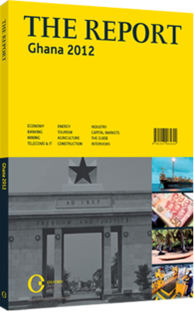Growing with the times: Efforts to update the palm oil sector in approach and technique remain under way
Palm oil production in Ghana has surged in recent decades, thanks to a top-down approach that may offer a preview of how the government wants to improve its agricultural sector. The country has found success in partnering with the private sector on large-scale projects. It has invested in the sector by founding and supporting the Oil Palm Research Institute, and empowered Ghanaian farmers to participate through outgrower schemes. As a result, Ghana has attracted some of the world’s biggest names in palm oil production.
UPDATING APPROACH: Although this stands in contrast to the small-scale approach followed in the cocoa sector (see analysis) it is roughly what Ghana hopes to do with other staple crops, such as maize, cassava, fruits and vegetables. The sector is generally characterised by small farms, out-dated methods, a lack of extension services and little access to capital. To modernise the sector, but also to ensure that Ghanaians are not shut out and land ownership issues do not metastasise and trigger protests or more, the government has worked with development partners such as the World Bank and USAID on a mixed model featuring public and private investment and out-grower schemes.
Some of those ideas have already been put into place in the palm oil sector. At independence in 1957 the state decided to abandon the colonial-era practice of leaving cultivation to small-scale farmers, and, unlike the current plan, forcibly removed some from their lands.
FOREIGN PARTNERSHIPS: Mismanagement and other challenges have hampered production, however. A privatisation programme was introduced and the sector has since evolved with four major players, each initially owned by the government and then developed in partnership with a foreign investor.
A 70% stake in Ghana Oil Palm Development Corporation (GOPDC) was bought by Belgian agribusiness conglomerate Nv Siat sa in 1995. It has 8000 ha under cultivation, which is roughly double the size of the other three: Norpalm AS of Norway; Benso Oil Palm Plantations, a joint venture between the government and Wilmar International, the world’s largest palm oil trader, which has an 80% stake; and Twifo Oil Palm Plantations a joint venture between the government and the consumer-staples multinational Unilever. The sector has also attracted investment from the International Finance Corporation, totalling $12.5m as of 2007.
Wilmar bought 58.5% of Benso from Unilever in 2010, a purchase that was part of an overall strategy to develop a fully integrated palm oil business in Ghana and the region, from cultivation to processing to sales and distribution. Land under cultivation grew from 18,000 ha to 103,000 ha from 1970 to 1990, and tripled from there, reaching 305,758 ha as of 2012, according to the Ministry of Food and Agriculture (MoFA). That is about 30% of the total area suitable for palm cultivation.
MEETING DEMAND: While the big producers have served as a catalyst, more than 80% of oil palm remains under the control of small-scale farms, ensuring that Ghanaian farmers remain key participants in the sector. Some of that capacity is represented by out-growers – nucleus farms buy the production and support the cultivation efforts and expenses of these partners. Overall, the large- and small-scale farms in the programmes of the major producers amount to 19,500 ha under cultivation. Of that total, 14,352 ha are farmed by GOPDC out-growers.
About 243,852 tonnes of palm oil are produced, according to MoFA data, which is 35,000 tonnes short of domestic demand. A look at regional demand puts into focus the opportunity inherent in the sector: estimated unmet demand in the West Africa region is 850,000 tonnes. Milling capacity among major companies is 172m tonnes per hour.
Based in part on the comprehensive approach Malaysia (now one of the world’s largest producers) took to developing what was once a non-native crop for the Asian country, Ghana’s government is looking toward the future by creating a master plan for large-scale palm oil production, for which it has won donor funding from Agence Française de Développement.
You have reached the limit of premium articles you can view for free.
Choose from the options below to purchase print or digital editions of our Reports. You can also purchase a website subscription giving you unlimited access to all of our Reports online for 12 months.
If you have already purchased this Report or have a website subscription, please login to continue.

